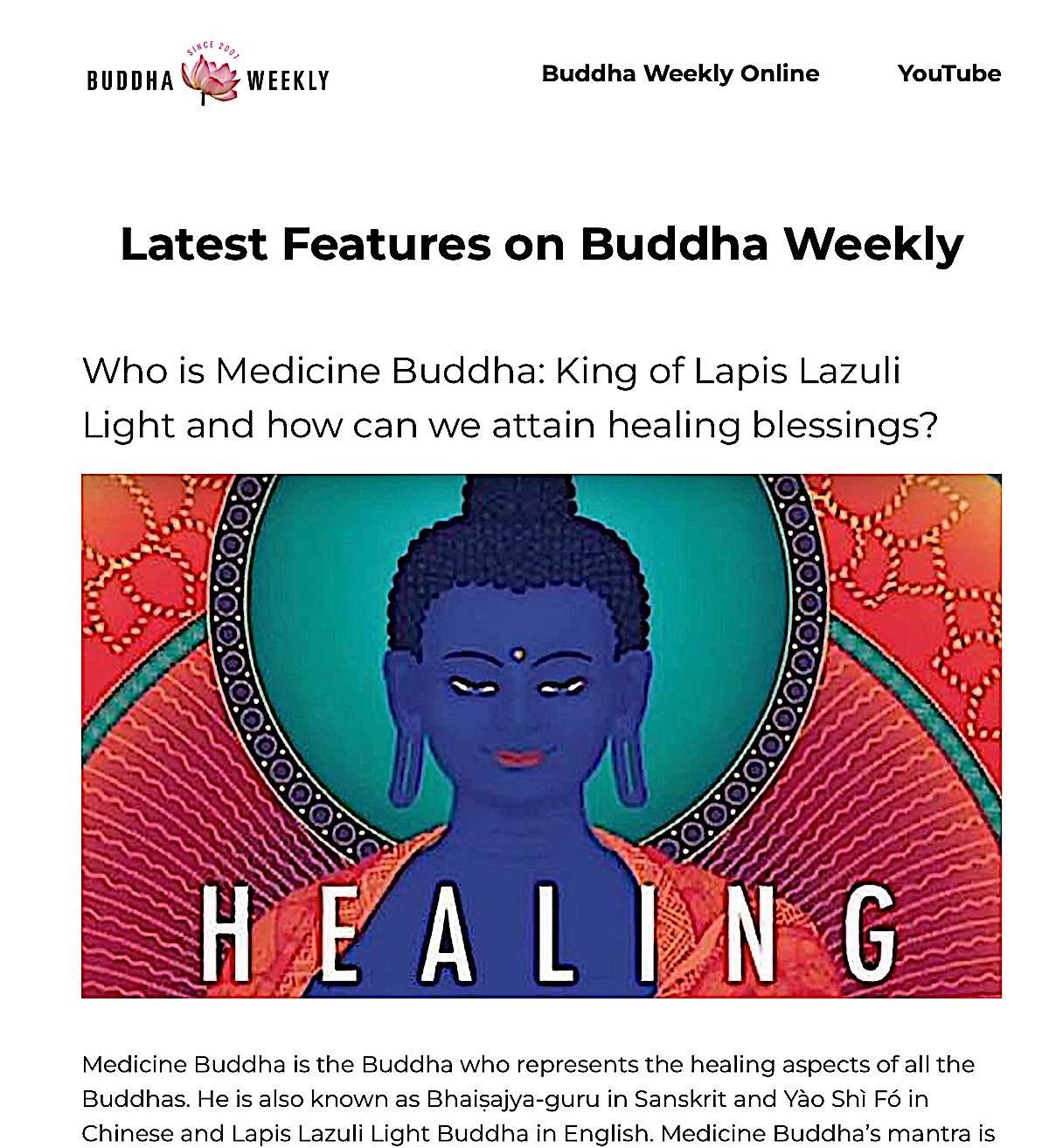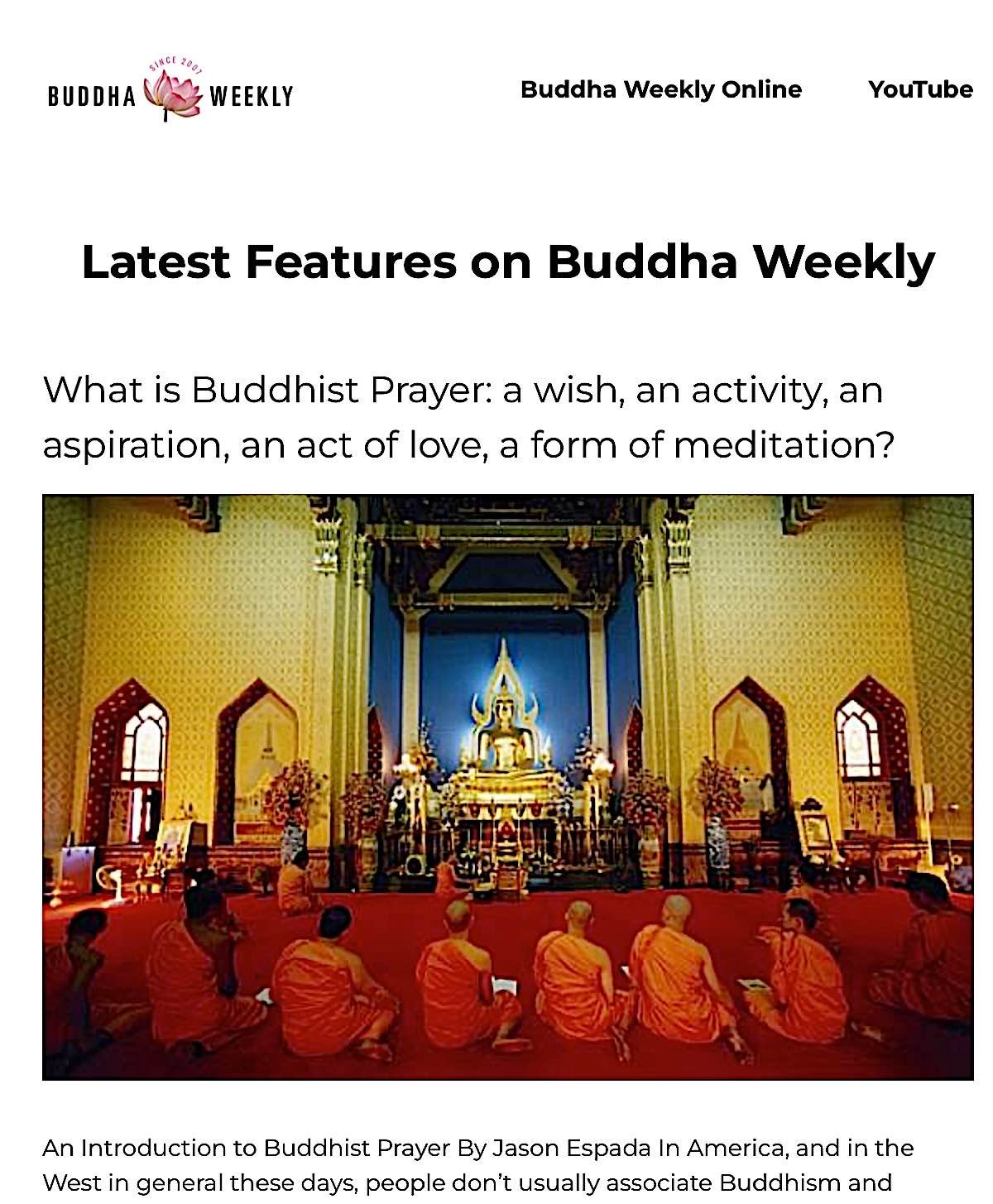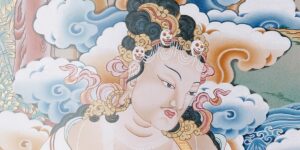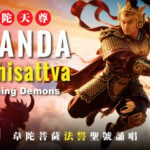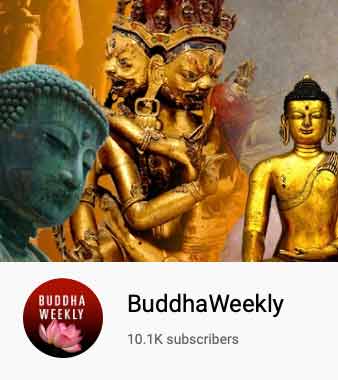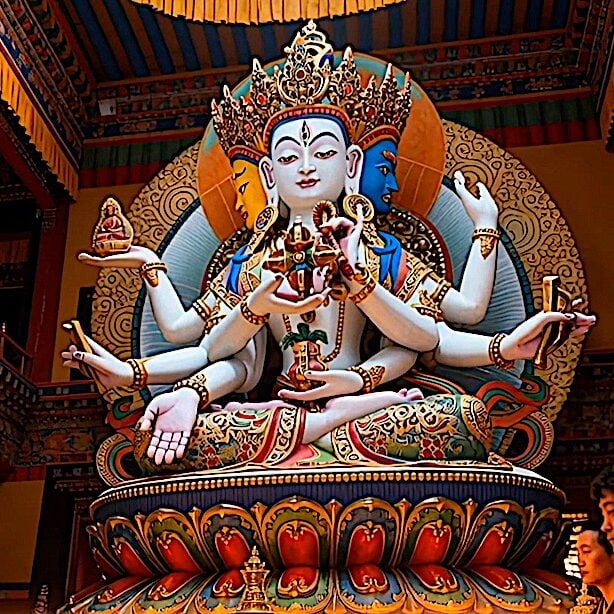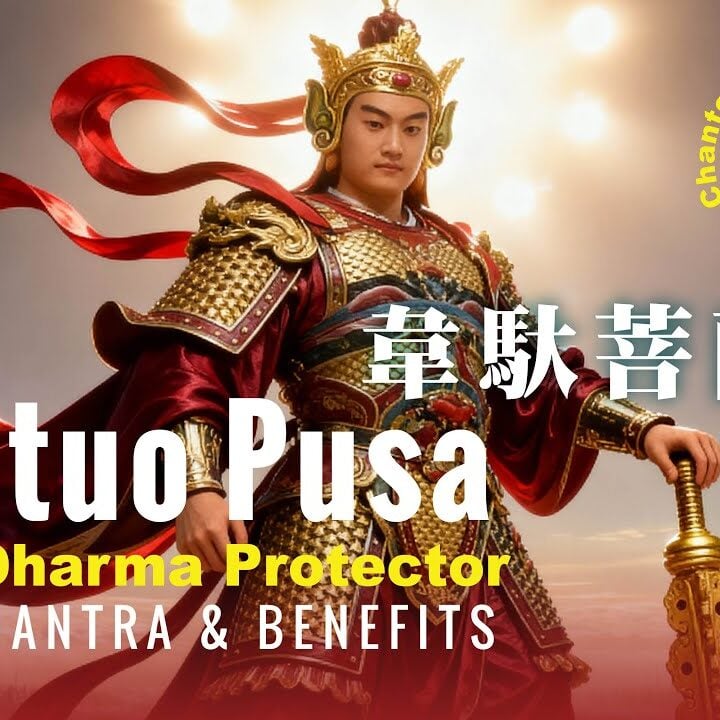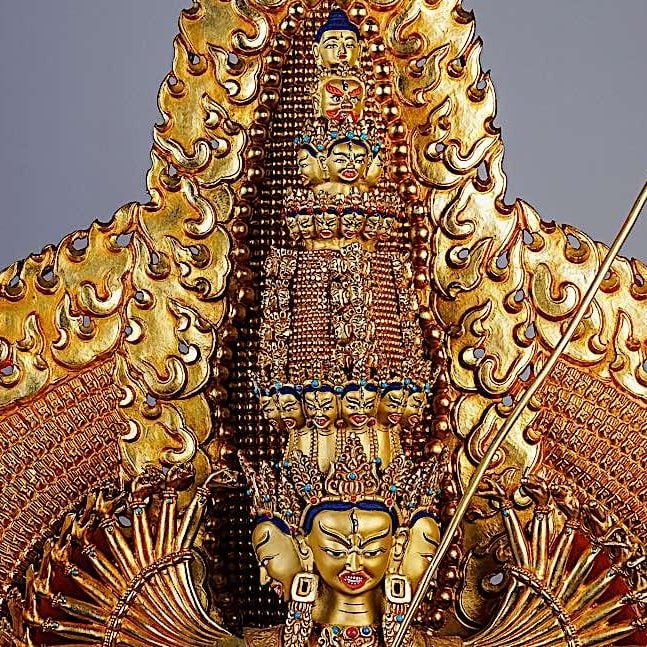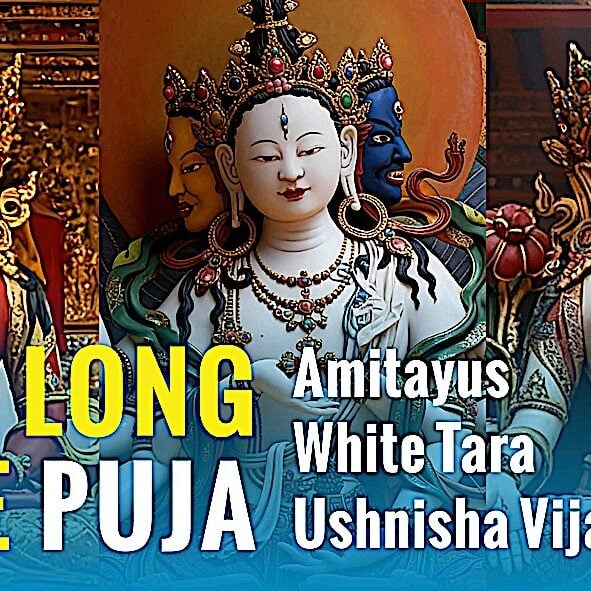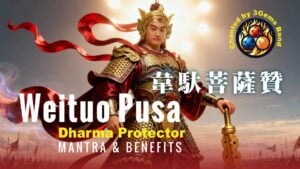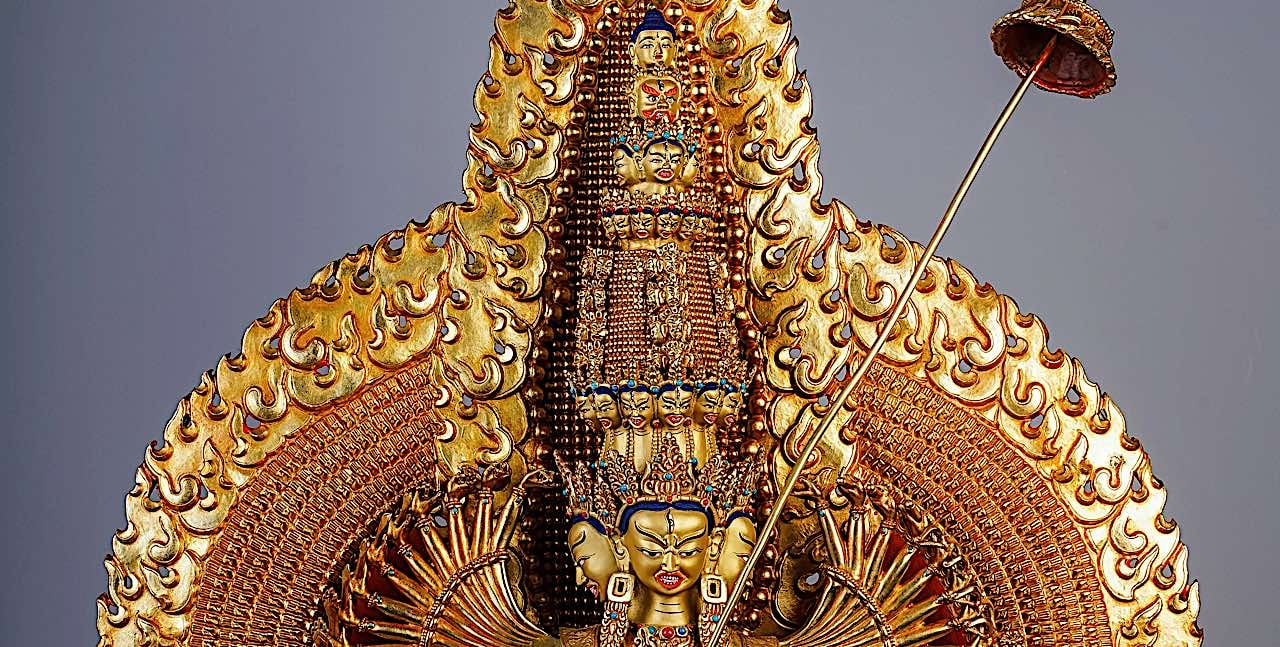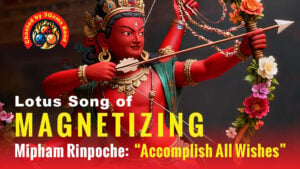Video: Buddhist Exorcism: Kshitigarbha’s Instruction: Demon Hunters Part 2 with Dharanis and Mantras
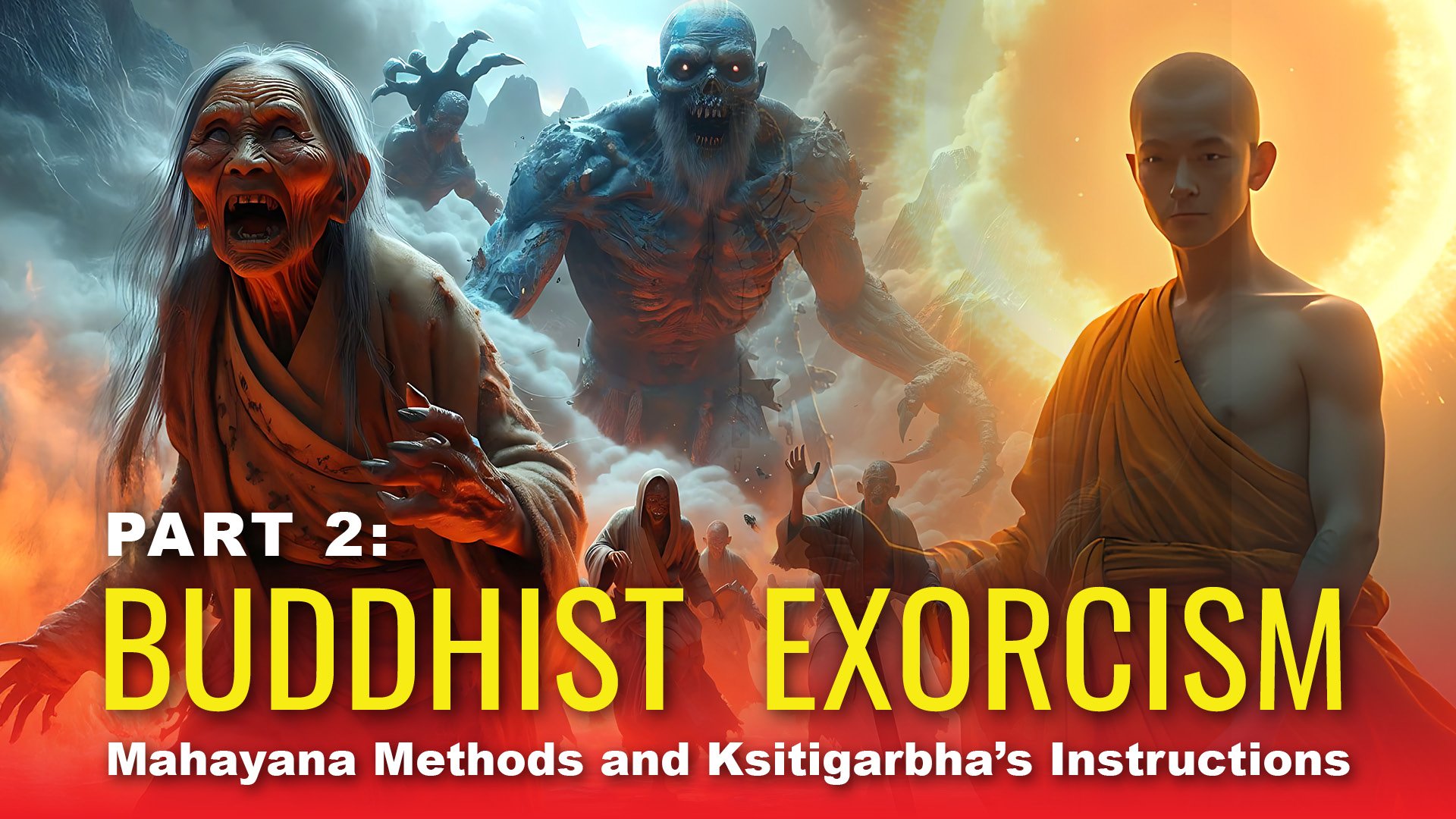
Why is the Bodhisattva practice of Kṣitigarbha (क्षितिगर्भ, 地藏, 지장, ས་ཡི་སྙིང་པོ་, Địa Tạng) the most profound for conquering spirits of all classes and what is his Dharani and Mantra? What are the eight classes of Demon or Spirit and how are they related to the eight poisons, the eight fears and the eight natural dangers? Why is Budddhist exorcism considered tranformational rather than destructive? Which Sutras and Dharanis are powerful in overcoming all classes of demon, spirit, ghost and harm-doer?
(Full Transcript on bottom of this feature.)
Video:
CONTENTS
00:00-02:20 How is “Buddhist Exorcism relevant in modern times?
02:20-04:07 Who are the 8 Types of Invisible Harm-Doers
04:07-04:57 Why do Invisible Beings Harm Us?
04:57-05:39 Maras and our Poisons and Attachments
05:39-06:11 Tsen Spirits: Ghosts of War
06:11-06:36 Mamos: Nature Spirits, storms, earthquakes
06:36-06:57 Rakshasha: Towering Cannibal Spirits
06:57-07:18 Bumipati Fire Sprits
07:18-07:40 Types of Mahayana Exorcism Practices
07:40-08:25 Kshitigarbha Practices for Natural Disasters: Lama Zopa
08:25-09:10 Kshitigarbha: Compassionate Exorcism
09.10-10:08 Why do Invisible Spirits Attack Us?
10:08-12:09 Shakyamuni Explains the 28 Benefits of Kshitigarbha
12:09-15:46 Kṣitigarbha Journeys to Hell to Save Mother
15:46-16:43 Kshitigarbha’s Bodhisattva Oath
16:43-17:14 How to Practice Kshitigarbha’s Dharani
17:14-17:48 Kshitigarbha Aspirational Prayer (Say 3 times)
17:48 Long Dharani of Kshitigarbha
22:46-23:25 Destroying the Poisons
23:25-24:32 Reciting Kshitigarbha’s Sutra Purifies Negative Karma
24:32-25:03 Kshitigarbha Practice for Natural Disasters
25:03-26:23 Golden Light Sutra Recitation Chapter 14
26:23-28:00 Dharani from Golden Light Sutra
Information icons: 20:06 – Kshitigarbha Mantra
26:06 Golden Light Sutra Chapter 14
KSHITIGARBHA PRAYER (3 times) is:
I prostate and go for Refuge to the Three Jewels and Bodhisattva Kshitigarbhya. I make offerings and request blessings from the great Bodhisattva Kṣitigarbha, who has unbearable compassion for me and all sentient beings and all realms and liberates them from all the suffering, obstacles and poisons. May all beings be free of suffering. May all beings be happy.
Accordingly, his Dharani, which is recommended by Lama Zopa, is:
Chhim bho chhim bho chim chhim bho
akasha chhim bho
vakara chhim bho
amavara chhim bho
vara chhim bho
vachira chhim bho
aroga chhim bho
dharma chhim bho
sateva chhim bho
sateni hala chhim bho
viva roka shava chhim bho
uva shama chhim bho
nayana chhim bho
prajña sama moni ratna chhim bho
kshana chhim bho
vishema variya chhim bho
shasi tala mava chhim bho
vi ah draso tama hele
dam ve yam ve
chakrase
chakra vasile
kshili phile karava
vara varite
hasere prarave
parechara bhandhane
aradane
phanara
cha chi cha cha
hile mile akhata thagekhe
thagakhi lo
thhare thhare mile madhe
nante kule mile
ang ku chitabhe
arai gyire vara gyire
kuta shamamale
tonagye tonagye
tonagule
huru huru huru
kulo sto mile
morito
mirita
bhandhata
kara kham rem
huru huru
According to Lama Zopa: “Even reciting four or five times, just a few times, it is very powerful. It is powerful to recite or just to think of the name of the Bodhisattva. It is very, very powerful.”
Finish with his short mantra. This is:
Om Kṣitigarbha Thaleng hum
14th Chapter of the Suvarṇaprabhāsottamasūtra, or the Golden Light Sutra. This chapter is called, The Protection called Refuge of the Yakshas. In the Sutra, the benefits written include:
“His negative deeds will fall away… all bad dreams and evil signs, afflictions of planets and stars, dreadful spells and demons will immediately depart.”
The 14th Chapter of the Golden Light Sutra has four Dharanis for this purpose. To recite the full chapter, see the information icon. The main Dharani, which is transmitted directly from Avalokiteshvara, and includes a suggestion to add your name in the mantra (add it after the “I” in the dedication), or the name of the person afflicted. The Dharani is:
tadyathā
kate vikate nikate pratyarthike pratyamitre śuddhe mukte vimale prabhāsvare aṇḍare paṇḍare śvete paṇḍaravāsini harikaṇḍari piṅgala akṣi dadhi mukhi rakṣa rakṣa
May this place where I dwell be free from all fear and terror, from all harm from suffering, and from all thunder, lightning, hailstorms, and sudden death, May I never see any bad, sinful thing but always be looked upon by the bodhisattva Ārya Avalokiteśvara with the blessing of his great compassion and be completely protected! Svāhā |
MANTRA CHANTING: BUDDHA WEEKLY (band) with lead singer and songwriter Hrishikesh Sonar (Track 10 of Mantra Collection 1 “Kṣitigarbha Jizo Dìzàng Earth Store Bodhisattva Chanted in Sanskrit” (isrc: QZK6F2396298)
AVAILABLE from BAND “Buddha Weekly” : Spotify, Apple Music, iTunes, Instagram/Facebook, TikTok & other ByteDance stores, YouTube Music, Amazon, Pandora, Deezer, Tidal, iHeartRadio, Claro Música, Saavn, Boomplay, Anghami, KKBox, NetEase, Tencent, Qobuz, Joox, Kuack Media, Yandex Music (beta), Adaptr, Flo, MediaNet
#Kṣitigarbha #Kshitigarbha #ས་ཡི་སྙིང་པོ་ #Gizo #地藏 #Jizo #क्षितिगर्भ # Địa Tạng
RESOURCES:
Donor Page: Buddha Weekly
Buddha Weekly Online Magazine
Youtube Music: Buddha Weekly
https://music.youtube.com/channel/UCTYYSGZqKz7rH0PeAqCoM8Q
Spotify: Buddha Weekly artist
Apple Music: Buddha Weekly
https://music.apple.com/us/artist/buddha-weekly/1691780466
Amazon Music: Buddha Weekly
Buddha Weekly Patreon
https://patreon.com/buddhaweekly
TRANSCRIPT:
Why is the Bodhisattva practice of Kṣitigarbha the most profound for conquering spirits of all classes and what is his Dharani and Mantra? What are the eight classes of Demon or Spirit and how are they related to the eight poisons, the eight fears and the eight natural dangers? Why is Budddhist exorcism considered transformational rather than destructive? Which Sutras and Dharanis are powerful in overcoming all classes of demon, spirit, ghost and harm-doer?
In part 1 of this series, we presented the powerful protection of Refuge in the Three Jewels and the Parittas Suttas. In part 2 of this series on Buddhist Exorcism, we cover the methods of the Great Vehicle, the Mahayana, with a special focus on Kṣitigarbha Bodhisattva as well as Sutras to recite to pacify demons and ghosts as well as protect against black magic and curses.
Who are the Eight Classes of invisible and worldly harm-doers and what are they? When we refer to supernatural harm-doers, this refers to worldly beings who may or may not be visible to us as humans, but never-the-less have the power to harm us.
These are often categorized as:
Maras
Yamas
Mamos
Rakshasa
Yakshas
Kinnaras
Bhumipati
and Tsan.
Although fearsome and powerful beings, this does not mean they will harm us. By definition, these eight classes of harm-doers are like any other visible being — animals, humans, insects. As non-Enlightened beings, they could potentially harm us, but they have the same potential as humans for kind and generous behavior. Like humans, they are subject to the poisons of anger, hate, jealousy, attachment, ignorance.
It is not unusual to hear stories of invisible beings turning against humans. We could be walking in a forest, and step on an endangered plant and offend a nature spirit, perhaps a Yaksha. These Yakshas, like nature, can be capricious and vengeful, especially towards humans who polute their wild places, or cut their trees or spoil their water.
In the same way we can soothe an angry human with the gentle Dharma teachings of Sutra, we can follow Kṣitigarbha’s example and help spread the Dharma to these angry Yakshas.
Or, perhaps you’re endlessly plagued by evil dreams and portents. This can be the Mara’s, the demons of attachment and the five poisons, disturbing us even when we try to sleep. A mantra before bed can placate the Maras. Of course the Maras tempt us through the day as well. Refuge in the Three Jewels and the Sutra teachings can calm the Maras.
Then, there are the endless wars that plague the world through the centuries. This can be the work of evil-minded humans, but it can also be the influence of the war-like Tsen spirits, who are powerful ghosts thriving and growing stronger with violence and war. For these situations, a community puja or ritual may help.
If your area is plagued by ferocious storms, tornadoes, hurricanes, lightning and flash floods, this can be the work of the stormy spirits, called Mamos, thought of as wrathful female nature spirits.
Humans can occasionally feel the vengeful curse of angry Rakshasa, often malevolent beings driven by anger. These are the towering, ferocious beings of legend.
Forest fires or dangerous fires can be caused by Bumipati, who are often wise but worldly, and can become harm-doers if enraged.
Buddhist exorcism practices are effective for all classes of uninvited, invisible spirits, including nature spirits or forces who cause storms, hurricanes, earthquakes and other damaging disasters in the worldly realms. For example, Kṣitigarbha Bodhisattva practice is not only the most effective method for transforming destructive invisible spirits, it is also effective to pacify natural disasters. Lama Zopa recommended the practice not only for protection from invisible spirits, but also for potential victims of hurricanes and earthquakes.
Buddhist exorcism does not destroy even the worst of harm-doers.
Exemplifying this compassionate mission to save nature spirits, demons, hungry ghosts and other beings lost to their anger and hate, attachment, jealousy and greed, is the great Bodhisattva Kṣitigarbha.
Kṣitigarbha, also known as Lord Jizo, is a bodhisattva revered by millions across East Asia — honored by the Buddha Himself due to his “untiring limitless compassion” — and his vows to help all sentient beings. He made the vow, as recorded in Sutra:
“I vow to rescue all suffering sentient beings across uncountable eons and the six paths of samsara by establishing convenient methods. When all have been saved, only then will I attain Buddhahood.”
The great Lord Jizo, Kṣitigarbha Bodhisattva, made his vow aeons ago, as recorded in The Sutra of the Vows of Kṣitigarbha Bodhisattva, and continues to help millions of suffering beings in the six realms.
Many beings in all six realms, from the hell realms to the heavenly rely on Kṣitigarbha Sutra, his name praise and mantra for help and protection. But, did you know that he also helps the demons, spirits and ghosts who attack us? They attack us because they too are suffering from the six poisons. Shakyamuni Buddha, himself, explained the benefits of reciting Kṣitigarbha’s Sutra, Dharani, Mantra and Divine Name for all six classes of beings. There are twenty-eight benefits to all beings. There are also, uniquely, seven clear benefits for those demons, spirits, dragons or nagas, nature spirits, and ghosts who attack us. In the Sutra, Chapter thirteen, it is written:
“Shakyamuni Buddha raised his golden arms, touching Kṣitigarbha Bodhisattvas head and said, “Kṣitigarbha, Bodhisattva, Now I place in your hands all sentient beings of the present and future and I exhort you never to allow any sentient beings to fall into the evil worlds.”
He went on to list 28 benefits of hearing or chanting the Sutra, name or mantras, and more strikingly, the seven benefits for supernatural beings. Buddha said:
“If any of the present and future eight classes of supernatural beings hear Kṣitigarbha’s name, pay homage to Kṣitigarbha’s images, or hear the Kṣitigarbha Fundamental Vow Sutra and follow the instructions within the Sutra to say praise and pay homage, then they shall attain seven kinds of benefits… They can attain the divine stages quickly. They will be free from bad Karma. They will be protected by Buddhas. They will proceed toward Buddhahood without falling back. Their energy of will to do right will be increased.”
This immeasurable compassion and power arises from fearless devotion to Dharma. In the Sutra of Kṣitigarbha, which describes several of the Bodhisattva’s previous incarnations, we hear the famous story of his first visit to the hell realms to free beings, before he was even the Bodhisattva.
Many eons ago, in the epoch of Buddha Padma Samadhi Svara Raja Tathagata, there lived a virtuous girl. The girl’s mother held strange beliefs and disrespected the Three Jewels. After her mother’s death, the Brahman girl, who was very devout to the Buddha of that time, was convinced that her mother may have been reborn in an unfortunate realm. Seeking help, she went to a temple and made offerings before an image of the Tathagata.
After praying for a long time, with tears streaming, she heard a Holy Voice: “Saintly girl, don’t be sad, I will tell you where your mother has gone. Due to your exceptional devotion, I will show you your mother’s whereabouts. Once you have made your offerings, return home and contemplate my name.”
She followed Buddha’s instructions, and continued meditating on that Buddha for one day and one night, until she felt herself swept away to a place with a boiling sea and many terrible looking demons. Men and women were being cooked in the water while terrible beasts clawed and tortured them.
Due to her faith and devotion, the girl remained calm and unafraid.
Suddenly, the ghost king Vandana appeared in front of her.
“Holy girl, why have you come here?”
“I have come in search of my mother,” said the Brahman girl fearlessly, “What is this place?”
“This is Cakravada Parvata,” said Vandana, “One only comes here through karmic debt or spiritual power.”
Vandana told the Brahman girl about the different hells in the four directions; the eighteen major hells and five hundred minor ones, all with boundless suffering. Then, he said,
“Because of your sincere offering to Buddha Padma Samadhi Svara Raja Tathagata, not only was your mother delivered from this hell realm, but so were all the other beings in this particular hell.”
When the girl returned, she knelt in front of the image of the Buddha and made the famous Oath of Kṣitigarbha:
“For an inexhaustible number of eons to come, I will establish expediencies to liberate and deliver sinful, suffering beings.”
This account took place eons ago. Vandana, the demon king, is now a bodhisattva called Dharasri, and the Brahman girl is now Kṣitigarbha Bodhisattva.
This demonstrates the immeasurable compassion of Buddha, of Kṣitigarbha and the Bodhisattva path. All beings, even ghosts, nature spirits, and demons, deserve and receive help. His Dharani relieves their cravings, anger, hate, jealousy, ignorance and even helps them learn Dharma.
His prayer and praise is always offered three times first, so that all visible and invisible beings can hear, followed by his Dharani at least five times, and his mantra as much as you can. The prayer, which you should say outloud is:
I prostrate and go for Refuge to the Three Jewels and Bodhisattva Kṣitigarbha. I make offerings and request blessings from the great Bodhisattva Kṣitigarbha, who has unbearable compassion for me and all sentient beings in all realms and liberates them from all the suffering, obstacles and poisons. May all beings be free of suffering. May all beings be happy.
Accordingly, his Dharani, which is recommended by Lama Zopa, is:
According to Lama Zopa: “Even reciting four or five times, just a few times, it is very powerful. It is powerful to recite or just to think of the name of the Bodhisattva. It is very, very powerful.”
He has several well known mantras. Recommended by Lama Zopa is
Om Aah Kṣitigarbha tahaleng Hum
We have a beautiful chanted version of his short mantra linked at the information icon.
The glorious Bodhisattva appears in all the dimensions and realms, and especially in our realm. His name translates as “Earth Treasury” as he brings the bounty of Earth. Part of his vow was to remain in Samsara as the Bodhisattva closest to all beings of the six realms, between the time of Shakyamuni Buddha and the next Buddha Maitreya.
Because of his great vow to rescue all beings, his emanation is also in the hell realms, reaching out his Bodhisattva hand to beings suffering from the ripening of their negative karma. As with his mother in his earlier life, he frees them from suffering.
He also appears in the hungry ghost realm, the human realm, the animal realm, and the heavenly realms, and anywhere there are suffering beings. Symbolizing his free access to all six realms is his staff with six rings, one ring for each realm: hell, hungry ghost, animal, human, demi-god and god-realms. His compassionate power in all six-realms is unparalelled. His staff shimmers, and he steps between the realms tirelessly. He often carries the glowing jewel which illuminates the path for suffering beings in the dimness of the darker realms.
His Dharani, Mantra and Sutra are often recited to release suffering beings from the hell realms or hungry ghost realm and all realms including the human realm. If his Dharani or mantra is used in exorcism, it releases the demon or ghost from suffering, rather than destroying them.
“Destroying the enemy” in Buddhist exorcism and mantras refers to the poisons that motivate the different classes of supernatural beings, not the actual being.
The poison is not the demon or ghost, or black magician. The poison is the hate that motivates the demon or ghost or black magician. There are ten poisons in total, three main ones, and 5 summary poisons. All of these poisons create suffering in Samsara. It is not the person, demon or ghost or other being that is the enemy to be destroyed. The enemy is the hate or other poisons, that is driving the harmful acts.
This is why in the Mahayana path, the main way we exorcise the eight-classes of invisible harm-doers is through Sutra recitation, and especially Kṣitigarbha’s Sutra. We are pacifying the harmful poison of anger or hate or jealousy with the pure teachings. We are teaching them with compassion.
It is taught that any time we recite this Sutra any spirits nearby will gather to listen, and then depart from their suffering. When we recite this Sutra for someone who feels they are being harassed by invisible spirits, the spirits will hear the Sutra and will be transformed, moving on to their next birth, free of their negative karma. In this way, we exorcise the spirits by helpfully transforming and purifying their karma.
Kṣitigarbha’s Mantra, practice and Dharani also calms and pacifies angry spirits and deities in nature. For this reason, Lama Zopa recommended the practices for people suffering in areas with earthquakes, or storms or other natural disasters. Hearing the Sutra, the angry natural spirits calm their tempests and have their own suffering removed.
Another especially effective and powerful Sutra in the spirit-handler’s tool kit is the famous 14th Chapter of the Suvarṇaprabhāsottamasūtra, or the Golden Light Sutra. This chapter is called, The Protection called Refuge of the Yakshas. In the Sutra, the benefits written include:
“His negative deeds will fall away; and all bad dreams and evil signs; afflictions of planets and stars; dreadful spells and demons; will immediately depart.”
The 14th Chapter of the Golden Light Sutra has four mantras for this purpose. To recite the full chapter, see the information icon. The main mantra, which is transmitted directly from Avalokiteśvara includes a suggestion to add your name, or the person afflicted, in the mantra. You would add it after the “I” in the dedication. The Dharani is:
After the mantra, you can read the translation of the mantra as a re-affirmation of your purpose and a dedication.
May this place where I dwell be free from all fear and terror, from all harm from suffering, and from all thunder, lightning, hailstorms, and sudden death, May I never see any bad, sinful thing but always be looked upon by the bodhisattva Ārya Avalokiteśvara with the blessing of his great compassion and be completely protected! Svāhā.
This is the Mahayana method — to save all sentient beings. All beings includes the demons and spirits who attack us. In the traditional of great Kṣitigarbha Bodhisattva, we have compassion for these deluded beings. May all beings benefit.
More articles by this author
Search
Latest Features
Please support the "Spread the Dharma" mission as one of our heroic Dharma Supporting Members, or with a one-time donation.
Please Help Support the “Spread the Dharma” Mission!
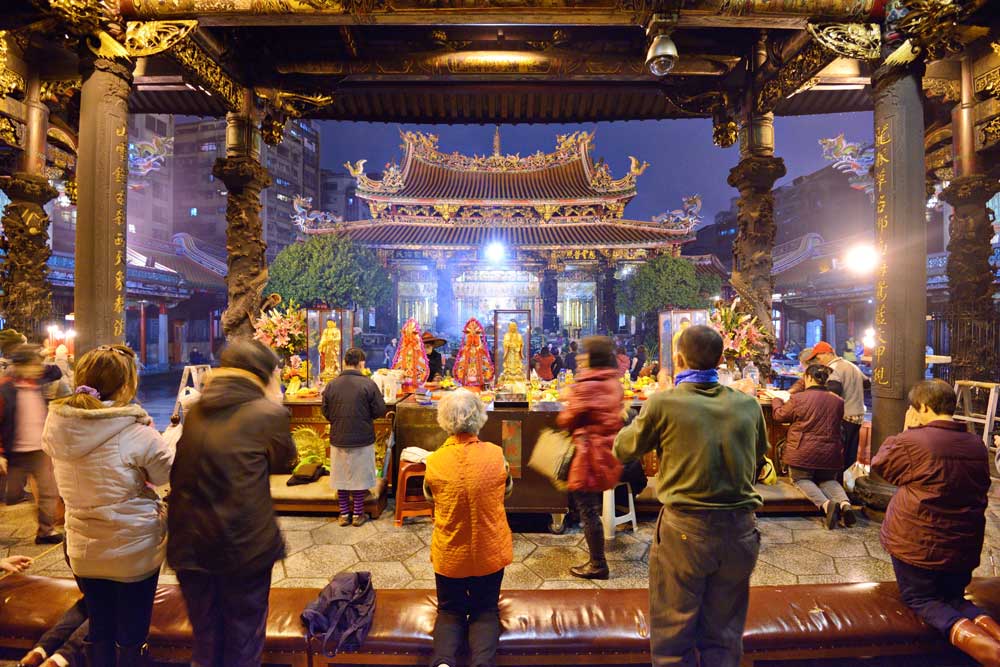
Be a part of the noble mission as a supporting member or a patron, or a volunteer contributor of content.
The power of Dharma to help sentient beings, in part, lies in ensuring access to Buddha’s precious Dharma — the mission of Buddha Weekly. We can’t do it without you!
A non-profit association since 2007, Buddha Weekly published many feature articles, videos, and, podcasts. Please consider supporting the mission to preserve and “Spread the Dharma." Your support as either a patron or a supporting member helps defray the high costs of producing quality Dharma content. Thank you! Learn more here, or become one of our super karma heroes on Patreon.
Lee Kane
Author | Buddha Weekly
Lee Kane is the editor of Buddha Weekly, since 2007. His main focuses as a writer are mindfulness techniques, meditation, Dharma and Sutra commentaries, Buddhist practices, international perspectives and traditions, Vajrayana, Mahayana, Zen. He also covers various events.
Lee also contributes as a writer to various other online magazines and blogs.
